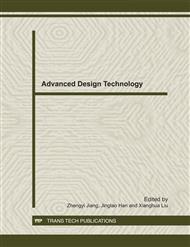p.402
p.406
p.410
p.415
p.419
p.423
p.427
p.431
p.436
Realization of a Prototype System for Point Cloud Data Processing in Reverse Engineering
Abstract:
In Reverse Engineering (RE), Point Cloud Data (PCD) processing is of great importance. But at present, a number of key issues about its algorithms are unresolved. This article mainly introduces the author who has done the research and put forward some specific algorithms on the aspects of data topology reconstruction, multi-view data registration and data reduction, and then developed a PCD processing system --3DPointshop, based on OpenGL and MFC. Through a series of instances of tests show that the prototype system which contains the algorithms and function modules will be able to implement on PCD processing well and could achieve the practical application level.
Info:
Periodical:
Pages:
419-422
Citation:
Online since:
December 2011
Authors:
Price:
Сopyright:
© 2012 Trans Tech Publications Ltd. All Rights Reserved
Share:
Citation:


